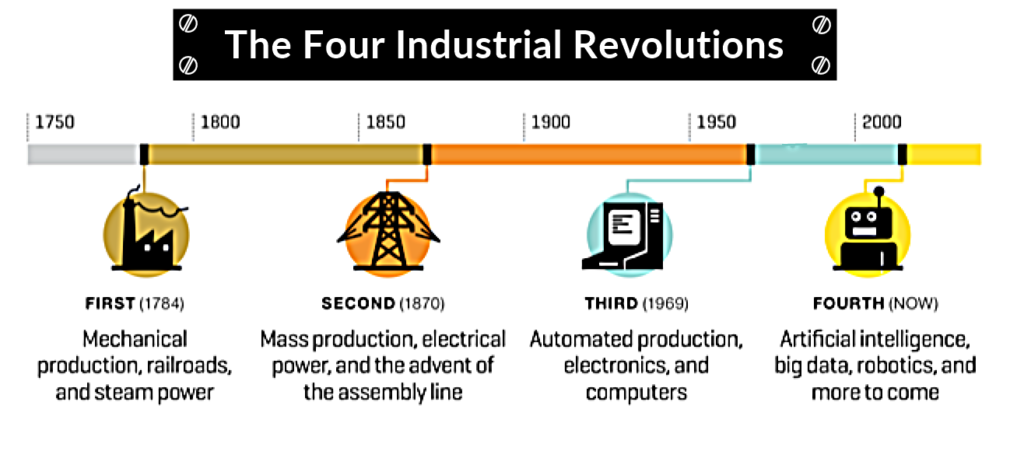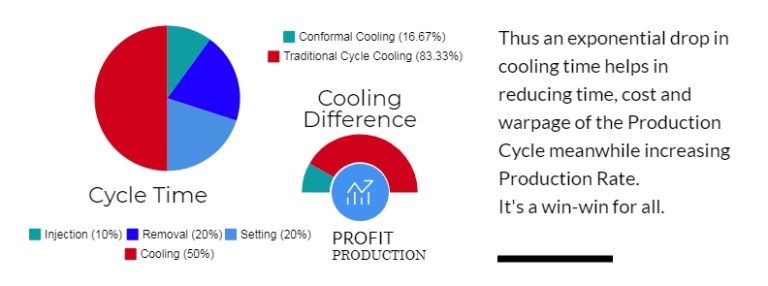Upon the dawn of the Industrial Revolution, there has been an overwhelming number of inventors and engineers trying and testing new methods of making more with limited resources. Resources are not just tangible but intangible time, labor work, and quality of work. From Stones and Sticks to Iron and Steel we have come a long way collectively as a species.

With the evolution of technology, the world has become a hybrid of tech and organics. Big Data, Machine Learning (ML), Artificial intelligence (AI), and the most promising one, the Internet of Things (IoT), we are bringing the world closer to function to its optimum levels. But that’s not it, the bond between the Digital and the Physical world will not just narrow down with ‘Online’ implications. A major R&D must be done in the ‘Offline’ (Manufacturing) aspect too.
3D printing of Conformal Cooling Channels seems to be one of the most promising ones to date. With major implications in the production of parts on a large scale with the help of Die and Moulds, Conformal Cooling Channels are by far the biggest Revolution yet to bestow its potential. Proven to increase the production rate from 25% – 60% (depending on the mold makers), it reduces warpage, time of production, and cost of production.
Image 2: Conformal Cooling Channels
The idea is simple. It’s just like centralized cooling but instead of a ‘Building’, it centralized cooling for the Mould. That’s it. It has been seen that almost 50% of the entire Cycle Time taken during the Production Cycle is due to the cooling of the molds. To counter this trivial problem conformal cooling does a very good job in reducing the time taken.
Making of Conformal Cooling Channels:-
So, we have come to the conclusion that Conformal Cooling helps. It makes everything easier and more profitable. But how do we make the channels?
There are two ways:-
- Traditional Manufacturing
- Additive Manufacturing.
Out of the above two, the former is the more feasible and logical way to make the Conformal Cooling Channels. Additive Manufacturing (also known as 3D Printing) is what Objectify Technologies prides itself on.

As you can see from the above picture the difference between the two types of Channel Formation. It’s clear that Traditional Methods of manufacturing are not cut out for such a task. Whereas Direct Metal Laser Sintering (DMLS) can take you a long way in the process and making of these intricate channels.

DMLS is a method of Metal Sintering where powdered material is Glued together with a high-intensity laser while making the channels layer by layer. We at Objectify Technologies have with us two of the mammoth equipment, the EOS M 290. An Additive Manufacturing Marvel. Read more about it by clicking here.
Thus, to conclude. 3D Printing i.e. Additive Manufacturing is the future. Rapid Prototyping in India is still at its incumbent stage and we are here with our plethora of equipment and engineering expertise. We at Objectify Technologies Private Limited are a mixed bunch of experts, manufacturing enthusiasts, quirky designers, and dedicated professionals. Bringing the future to India, we take pride in saying we are one of the very few Additive manufacturing and 3D Printing companies in India. With our headquarters in Delhi and branches in Kanpur, Bangalore, and Pune, we help you IDEATE, DESIGN, CREATE
